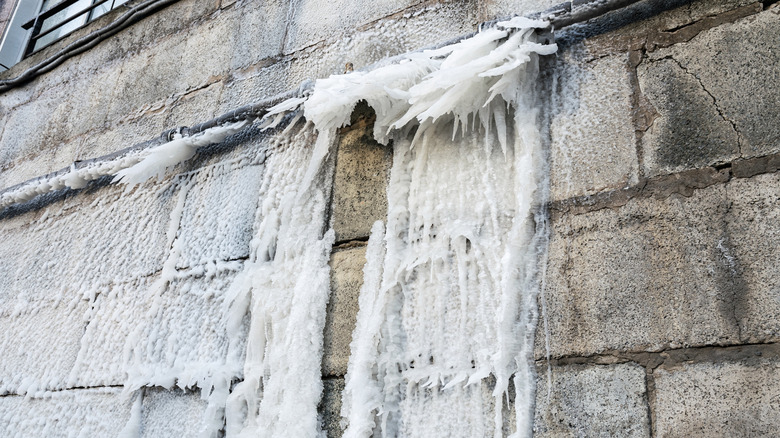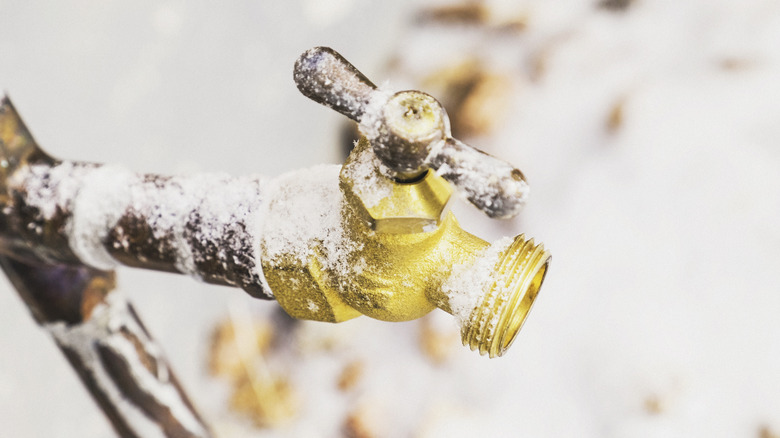You'll Hate Yourself If You Let Your Pipes Burst In Winter By Forgetting This Task
Winter is right around the corner — homeowners, that means it's time to start thinking about winterizing your outdoor plumbing to prevent your pipes from freezing. Two important tasks fall under this umbrella but are occasionally overlooked: turning off all your outdoor faucets (aka spigots) and disconnecting any exterior hoses. Neglecting to do so could become an expensive nuisance once temperatures plummet in fall or winter.
If you were paying attention in science class as a kid, then you'll remember that water is one of the few liquids that expands when it freezes. That's why it's so vital to prep your outdoor plumbing for exposure to the elements. If you leave your garden hoses connected to a water supply or full of excess water, and the outdoor temperature drops below freezing, all that water could freeze and turn to ice. This puts added pressure on your garden hose, spigot, and any connecting pipes, which could cause them to burst.
When icy-cold temperatures are at play, it doesn't take much time for a hose or pipe to freeze; it can happen in the span of just four or five hours (yes, even in hoses that are suitable for cool winter weather). And replacing a busted spigot could set you back hundreds of dollars. Here's how to prevent this common mistake.
How to properly winterize your garden hoses & outdoor faucets
To adequately protect your outdoor plumbing, you'll want to tackle the aforementioned tasks before the mercury dips below freezing. Thankfully, they're both pretty straightforward. Simply turn off the water supply to your outdoor faucets, detach and fully drain your exterior hoses, drain your faucets, and shut them off by turning their handles clockwise. Then, find a dry, temperature-controlled place to stash your hoses for the season.
Additionally, it's important to shield your outdoor faucet itself from the elements. This will ensure it doesn't freeze over and crack, and that no sub-zero air from outside travels up your faucet and into your pipes. You can do so by purchasing a commercial faucet cover that contains insulating material from a hardware store or by using a pool noodle to make a DIY faucet cover. You might also consider insulating any pipes near exterior walls, such as the ones in your garage, which are more susceptible to freezing.

